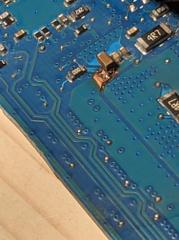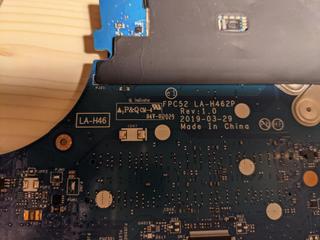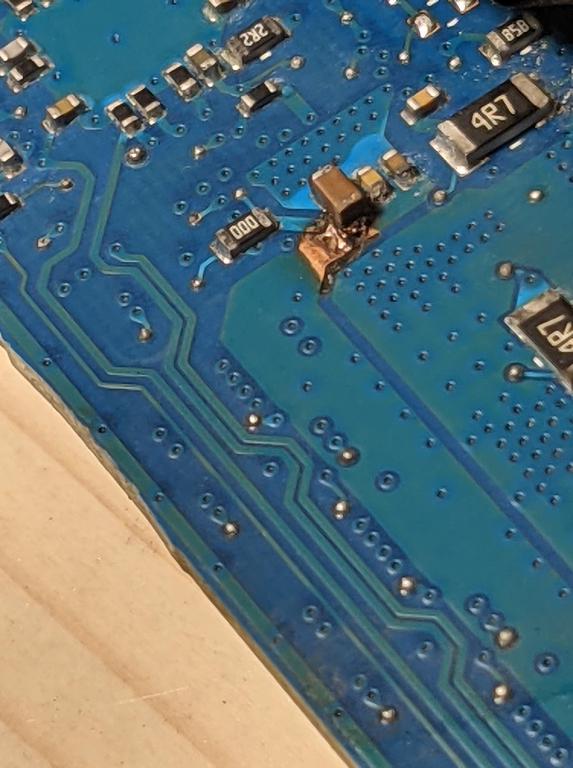

Need some pointing in the right direction...if this is even able to be fixed.
Got my son an HP Pavilion laptop for his birthday (10 years old). It had been great for a few months BUT the dingbat dropped a bottle of water on the laptop (not too much water). He didn't think to shut it off, until it shut itself off in 30 seconds. I tore it apart and dried everything off. I couldn't see anything visible. I put it back together with my fingers crossed and nothing. A few days later with more time on my hands I dug back into it. searched every little square inch of the mother board and was getting no where. Eventually on the bottom, under some black covering, I discovered the culprit. Looks like all 3 components are blown along with some motherboard damage. I would like to give it a shot to repair this but have no idea how to identify what components to order.
What does anyone here think? Is it possibly repairable? Where do I find out what the components are to order new ones? I cant find info anywhere. I am able to solder them back on once I figure it out.



